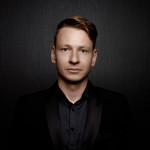To no surprise, 2022 was a major period of growth and transformation for influencer marketing. And while this number is expected to continue to rise, there are particular challenges that brands and marketers face in order for their campaigns to be executed effectively—including an impending economic recession, fraudulent social media activity, and the difficulty of identifying the “right” creators. By considering emerging trends in the industry when implementing upcoming influencer marketing campaigns, marketers can see a better return on investment and have a more comprehensive understanding of what matters to the influencers they are targeting.
Throughout 2023, we expect to see the following trends come to light:
1. Despite the economic slowdown, brands will continue to prioritize investments in influencer marketing
Despite the economic slowdown and reviewed marketing budgets, brands are still expected to continue to invest in influencer marketing. While overall marketing budgets may be revised downward, brands are likely to invest more in their partnerships with influencers to reduce their overall marketing costs. The reason is that influencer content is the cheapest form of branded content.
As a result of this shift in priorities and this greater focus on influencer marketing, we are also expecting that brands will increasingly move their activities with influencers in-house. Instead of focusing solely on one-off sponsored posts, as this has often been the case over the years, marketers will be encouraged to put their influencer marketing strategy at the center of their overall objectives.
With consumers increasingly tightening their belts to face higher costs of living, marketers will need to ensure that their collaborations with influencers remain relevant to them. Even with the bleak economic context, consumers will likely be more inclined to welcome sponsored posts for temporary escapism, offering an excellent opportunity for brands to connect with their audiences.
2. Gaming influencers will become the one of the most sought after creator verticals
Gaming influencers are a rapidly growing segment of influencers, globally, raking in large audiences on nearly every social media platform. They can range from skilled players who stream their gameplaying to millions of fans to professional video game players competing in the up-and-coming Esports space, or even smaller creators who are just starting to try their hand at gaming.
What many brands outside of the gaming industry have yet to recognize is the large and dedicated audiences gaming influencers often have. Their fans not only follow them for their high-level video game skills, but also for the tight-knit sense of community they have built with both the influencer they are following and fellow fans. One example of this is Markiplier, a gaming influencer who has racked up almost 30 million followers, whose popularity stems from the comedic commentary he includes while playing horror video games.
2023 will be the year that marketers embrace partnerships with gaming influencers, even if no obvious direct ties to the gaming community exist. While the gamers’ main platform might be Twitch or a similar streaming service, they often have a following on other social media platforms, such as Instagram and YouTube. For instance, Samsung, Red Bull, and even Hershey are some of the brands who already have partnerships with Ninja, the most followed gaming streamer on Twitch. In 2023, we expect to see a surplus of non-gaming brands following in their wake.
3. Instagram and TikTok will continue their reign as the top platforms for influencer marketing
Instagram’s reputation remains undisputed when it comes to influencer marketing. It continues to offer brands the most potential for their influencer marketing strategy. However, competition remains sharp with the ever-growing popularity of TikTok among Gen Z. According to recent analysis, 40 percent of those aged between 18-24 prefer to use TikTok, instead of Google, for their online searches.
Marketers have already understood the potential of these two platforms to authentically connect with their target audiences. However, in the next year, they will increasingly adapt and diversify their marketing strategy to the specifics of these two platforms, to fully reap the benefits they offer.
The number of followers an influencer has remains a key metric to evaluate their legitimacy and ROI. However, brands need to continue to be mindful of bots and inauthentic accounts before agreeing to any partnerships as only 60 percent of accounts on Instagram are estimated to be owned by real people. Marketers should also leverage creative and entertaining content to generate the most engagement. It’s become clear that consumer focus is more on the content rather than the influencers themselves. Authentic content is in the foreground at TikTok and Instagram—which is why nano- and micro-influencers are increasingly taking the reins.
4. Live shopping will come to the forefront of retail marketing strategies
We expect retailers to increasingly prioritize live shopping in the year ahead as it has the potential to be a major source of revenue. Though, it is certain that they will face the challenges to adapt to the likes of Instagram and TikTok to attract users on these platforms to shop, while also providing them with a great experience throughout their purchase journey.
Among the hurdles retailers will face will be the necessity to provide a seamless omnichannel experience and adaptability of traditional retail features on social media platforms. TikTok and Instagram do provide good creation tools that retailers can rely on, but they also need to ensure an optimized integration with their own website.
And while it is great to attract new customers in addition to the ones already retained in their website, this also means retailers will need to be able to handle the increase—which could be quite substantial—in numbers of users and generated orders. Scalability needs to be at the heart of their live shopping strategy.
Finally, companies will also need to make internal adjustments in terms of how they work transversally with their colleagues. Sales teams will need to be even more integrated with marketing teams in order to ensure the success of their live shopping strategy.








